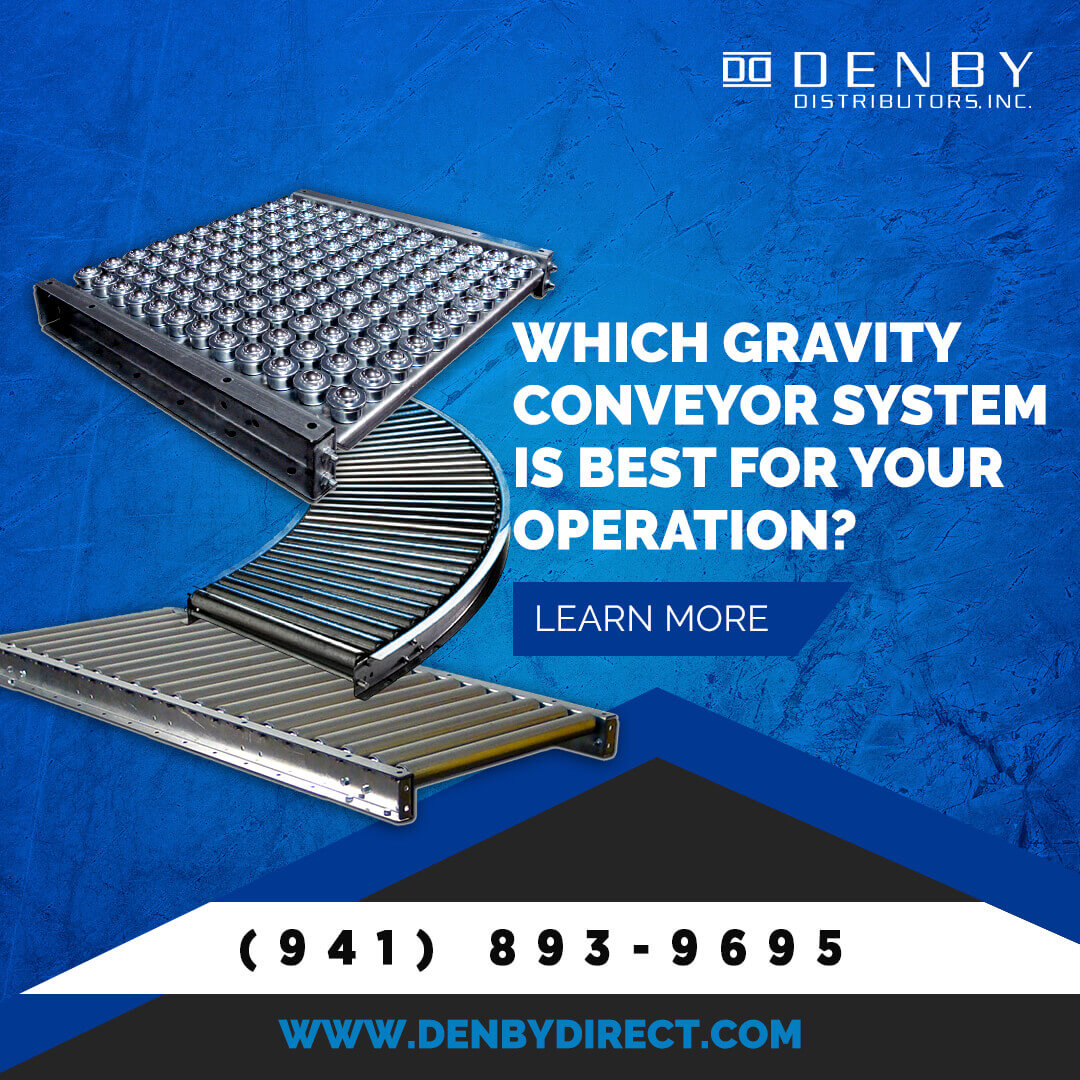Tags: Gravity Conveyors, Gravity Conveyor, Best Gravity Conveyor Models, Steel Gravity Rollers, Aluminum Gravity Conveyor
Using a trailer, forklift, or box truck to shift items around your business is fine when those things are few and your space is small.
But a larger operation calls for a different setup, usually one where a conveyor system comes into play.
Conveyers serve as an arterial system for distribution and manufacturing operations, helping make things more efficient, productive, and safer.
If improving your material handling process is next on your checklist for business growth, a gravity conveyor should be on your list. Which type works best for you will be a combination of factors such as what you need to move, how much space you have to set up a conveyor system, and how much material you need to move.
What is a Gravity Conveyor?
Conveyors move pieces from point A to point B without the need for manual labor. Those pieces could be containers, raw materials, or packages being routed through a distribution center, warehouse, or factory. With the average size of those spaces growing in recent years, efficient movement of objects is key.
Many conveyors rely on electrical power to move the belts and platforms that guide your items along. A gravity conveyor takes advantage of the object's weight and the force of gravity to move things along. Just a small angle of slope applied to a platform can be enough to create a continuous flow.
These conveyors can be configured for permanent use or set up temporarily to add capacity or capability. They are super versatile because the sections come in different lengths, widths, heights, and metal gauges. Their modular design allows for full customization and fitting into awkwardly designed spaces.
Gravity conveyors are less expensive to run because they don’t require power or motor maintenance. Machine-driven conveyors account for 51 percent of electricity consumption in material handling for manufacturing. They can be paired up with powered systems or larger existing ones to improve handling capacity as needed.
They’ve proven useful in many applications in factory and warehouse production including:
- Loading and unloading of trucks
- Assembly areas
- Order picking
- Order fulfillment
- Receiving/shipping
Types of Gravity Conveyor Systems
There are a couple of different styles of gravity conveyors, and what you plan to move has a large impact on which would be best for your operations.
Depending on your space and needs, you might combine any of these to find the most efficient method of moving your product.
Skatewheel
Skatewheel gravity conveyors work well for moving items short distances and can handle objects wider than the conveyor frame.
These conveyors are made up of wheels placed on axles and separated by spacers to keep them in place. The number of wheels per axle can be adjusted depending on the size and weight of the articles you’re planning to move.
Skatewheels work best for lightweight packages or containers that have flat, smooth bottoms. You see them most commonly deployed in shipping, receiving, and assembly areas of a plant or warehouse and in industries that handle parcels, food and beverages, and consumable goods.
This type of conveyor has two main benefits over the others. Skatewheels can maintain product orientation because of wheel differentials, meaning the front of the package or crate will always be facing the front. They’re also less expensive, making them an economical option as long as they can handle your loads.
Items that work well for transport on skatewheel conveyors include:
- Boxes
- Carriers
- Sheets
- Flat bundles
- Crates
- Cartons
- Some totes
- Flat bags
Roller
By contrast, a gravity roller conveyor moves articles across a bed of rollers. The rollers are a series of metal tubes with bearings mounted on axles. They’re low friction, so little force is needed to rotate the rollers and move the object along.
You often find these used in industries that involve distribution, packaging, and manufacturing.
They’re easy to install and involve little maintenance. You can combine them with a powered system, if you have one in place, and can build a path that is straight or curved.
The conveyor rollers come in various sizes - 1 3/8" - 6", 18-7 GA. and thicker if needed. The smaller sizes work well in setups for lightweight products. The larger size is more common in gravity conveyors and works well in medium-to-heavy weight applications.
Rollers can be individually removed or replaced as needed, and you can change the spacing to match up with your load or application.
While you can use these in many of the same places as skatewheel, rollers have the advantage depending on the type of load you need to move. They are good for items with uneven or open bottoms, or a rim around the bottom.
In addition to being able to move the same items as skatewheels, rollers are appropriate for:
- Wire bins
- Wood Boxes
- Canisters
- Strap items
- Blocks
- Barrels
- Drums
- Cans
- Lumber
Chute
This particular type of conveyor makes the most obvious use of gravity in that it moves items from a high point to a low point. Think of it as a metal slide for your materials or packages. You’ll often find them connecting two other types of material handling devices or conveyors on different levels.
Chute conveyors are used for bulk-handling and work well for lighter items that might come in different packaging materials like cardboard or pouches. You also find them widely used for moving grain material like cereal and coal as well as fine powders.
These conveyors are inexpensive and need less space since they work at a steeper angle. But consider well as they also increase the odds of damage as items bump into each other.
Choosing Your Gravity Conveyor
When it comes to gravity conveyors, you have a few options to consider in choosing which is best for your particular operation. The size of your space and the type of material you’re moving contribute to this decision.
If you need help determining which type of gravity conveyor to go with, our experts would be happy to answer your questions and help you reach a conclusion. Contact us so we can help you customize the solution that works for your business and goals.




